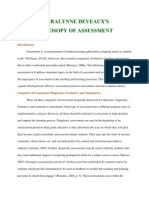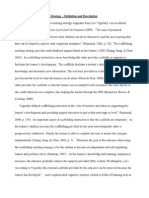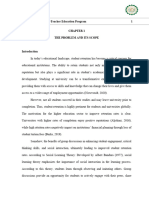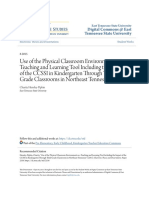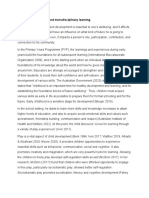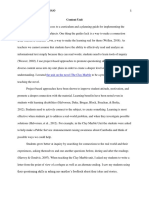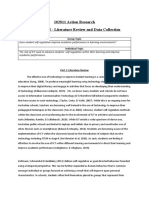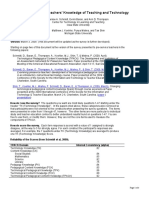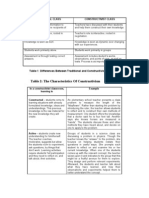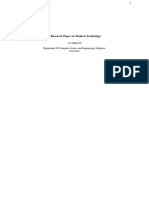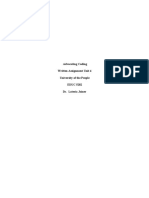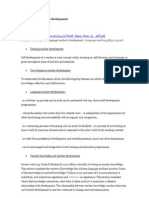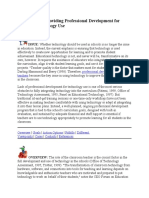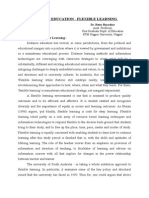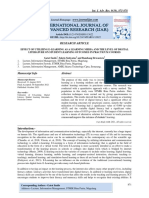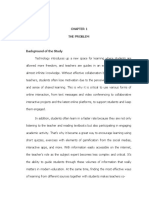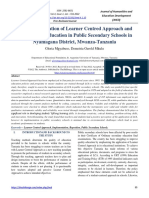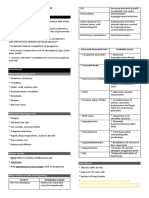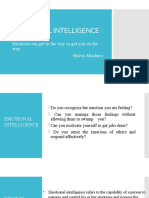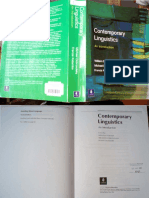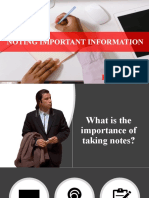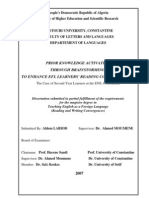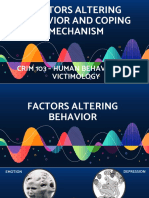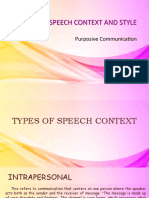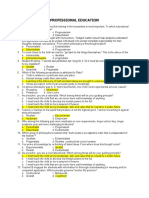100% found this document useful (1 vote)
195 views6 pagesTeaching Strategies & Student Performance
This chapter reviews related literature and studies on teaching strategies and their relationship to student performance on tasks. Sources include websites, books, articles, and other research. The literature discusses traditional grading limitations and benefits of student-owned tracking of progress. Effective teaching strategies depend on factors like student age and abilities. Positive student-teacher relationships can improve academic outcomes while conflict harms performance. Teaching methods must suit objectives and learning levels to effectively transmit knowledge. Performance tasks assess skills application and allow evaluation of student understanding over time.
Uploaded by
Jimlord GarciaCopyright
© © All Rights Reserved
We take content rights seriously. If you suspect this is your content, claim it here.
Available Formats
Download as DOCX, PDF, TXT or read online on Scribd
100% found this document useful (1 vote)
195 views6 pagesTeaching Strategies & Student Performance
This chapter reviews related literature and studies on teaching strategies and their relationship to student performance on tasks. Sources include websites, books, articles, and other research. The literature discusses traditional grading limitations and benefits of student-owned tracking of progress. Effective teaching strategies depend on factors like student age and abilities. Positive student-teacher relationships can improve academic outcomes while conflict harms performance. Teaching methods must suit objectives and learning levels to effectively transmit knowledge. Performance tasks assess skills application and allow evaluation of student understanding over time.
Uploaded by
Jimlord GarciaCopyright
© © All Rights Reserved
We take content rights seriously. If you suspect this is your content, claim it here.
Available Formats
Download as DOCX, PDF, TXT or read online on Scribd
/ 6
